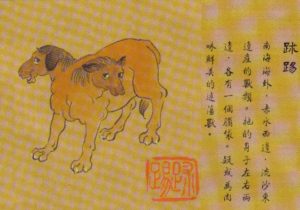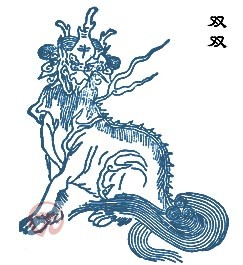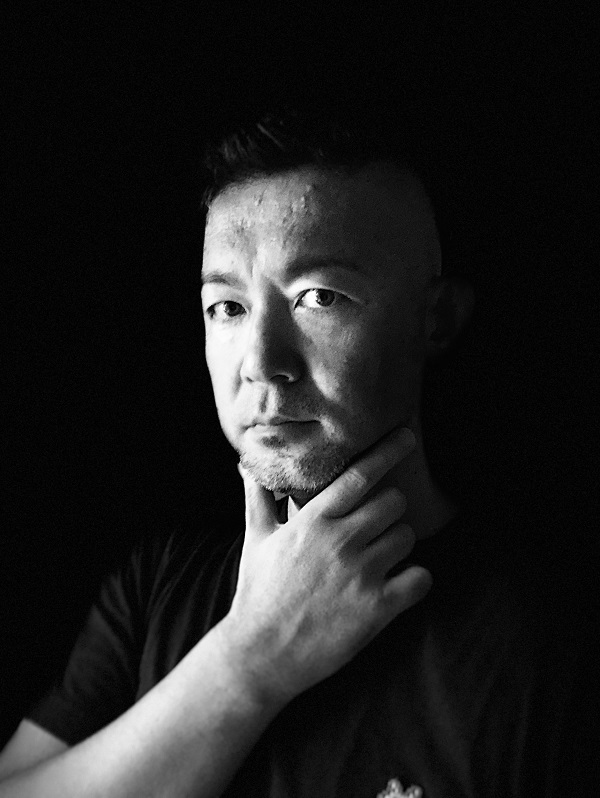- JAPANESE
- LANGUAGE
X
 THAT IS GOOD
THAT IS GOOD
It has been a while, everyone. After inserting the “Jomon special ~JOMON・Art・Subculture~ (➀ , ➁)” and “Interview with TSUYOSHI” (Coming soon), I had to keep pushing the deadline, and now New Year’s has come and gone, and even Chinese New Year has come and gone. So, I finally came back to the main point of Past and Future of Nippon Subculture”. One of the reasons for the long delay is that I have been very busy, but another reason is that the theme of this issue, “Kaiju” is an important one for me, and I have not been able to write about it.
Straight up, my favorite genre of subculture is “kaiju“. Right now, (as I write, it is February), “What to Do With the Dead Kaiju?” is going viral, both good and bad. It’s not really comparable, but if you ask me which I prefer, I prefer monsters to robots!, although they are different genres and different goodness. I don’t know if my parents bought it or if it was something I begged them to buy for me as a child, but I remember having an LP record called “Ultraman eve” and I had many notebooks in which I had drawn and saved monsters of my own design. What I do now is no different…, now it’s just more sophisticated in technology and logics loaded onto what I used to do as a child. I prefer monsters to Ultraman, as many people may do. So I would like to consider the “loaded logic” part of why monsters tug at my heartstrings so much, and why I have grown up with them hooked.
Now (to put it very crudely), when you mention the word “Kaiju” to Japanese people, I think they will think of a somewhat common image. That is why the cultural impact of “Godzilla” and “Ultraman” was so great, but more on this later. As was the case with “yokai,” it is difficult to translate “kaiju” into English. The literal translation would be “monster”, but there are many things that fall outside the meaning of “kaiju”. Since Japanese culture geek Guillermo del Toro called the creature “Kaiju” in the movie “Pacific Rim”, and Dr. Serizawa played by Ken Watanabe in the movie “Godzilla” (2014, Gareth’s version), called GODZILLA with the Japanese pronunciation “go-ji-ra”, the monster has become relatively more civilized in the English-speaking world. However, as language is a reflection of culture, I do not think the depth of understanding will change that much.
The common image we (as mainly in Japanese) have of monsters is one created by the modern subculture, but what then makes the Japanese subculture and monsters unique? As it turns out, and it is always the same in my theory, it is an animistic sense that has existed since time immemorial. I call it “the eruption of Jomon animism in modern culture”. In particular, I believe that the sense of ” kakkoii (cool)” in regards to monsters has its roots in the sense of awe and reverence for nature that the Jomon people, who lived in the midst of nature, must have felt. I also surf, and when I wait for a wave offshore and see a big swell coming in from the other side, I feel a mixture of fear and excitement that comes from the bottom of my stomach. I feel this is awe and respect for nature.
I wrote “Jomon animism”, but animism is not exclusive to Japan. When I say “Jomon”, I mean the Japanese expression of the animistic sensibility common to various native/tribal cultures of the world. To understand how kaiju are Japanese-ish, I will first discuss the word “kaiju” and then how other cultures around the world treat kaiju-like objects.
So, let’s look at the origin of the word “kaiju (monster)”, which literally means “suspicious beast” or “unidentified creature” (UMA). The first appearance in written material worldwide is in the ”Classic of Mountains and Seas”, compiled in stages from the 4th to 3rd centuries B.C. in ancient China. It describes a variety of monstrous beings, from gods in Chinese legends to ghosts. Here, the word “kaiju” is more like “yokai” in nuance.


A sculpture artist in Beijing reproduces 60 divine beasts from a strange Chinese book, “Classic of Mountains and Seas”. (This site is in Japanese.)
After all, large sculptures are good. It is even better when it is displayed in nature.
In the case of Japan, “Suruga Kuni Fudoki”, compiled by Masanobu Abe in 1843, has an article on “Hihi (baboons)” in the chapter “Kaii (strangeness)” in the last part of Volume 24, and the word “monster” is used in the description “This monster always likes to eat tree bark and bamboo”. Also, in Volume 25, there is a section titled “Kaiju”, which describes a “monkey-like animal with wings” captured by villagers in the mountains of Kojika, Suruga-ku, Shizuoka City, Shizuoka Prefecture at present. (Excerpt from Wikipedia)” This also gives the impression of a UMA or yokai-like creature. After all, the term “Kaiju” in its modern subcultural meaning would not become widespread until 1954’s “Godzilla” (talk more details in next episode).
Mythology is indispensable in the search for the roots of kaiju. Giants, demigods, composite beasts, and other monstrous beings can be found in every mythology around the world. It is truly a treasure trove of kaiju. If I were to list them all, I could write several books. Therefore, I would like to explore the world of mythology under two conditions.
The first condition is “large”. The impression that kaiju is huge (with some exceptions, such as the Dali in Ultra Seven) is also a mental impression created by the monsters in Godzilla and Ultraman. However, the fact that this impression fits well is because it is close to the archetype, a mental image engraved in the human psyche/memory, and, from a personal point of view, being “big” or “huge” is a common practice in different cultures that embodies awe of the natural and supernatural.
Another condition is that they are not simply giants with a larger human form. In mythology, giants are also an important factor common to different cultures, but in this section we will exclude them only because I feel they are not “kaiju-like”.
First, let us look at Greek mythology, the treasure house of kaiju. Greek mythology is the source of many of the monsters and monstrous creatures that appear in today’s RPGs and fantasy creations, including the griffon, chimera, medusa, pegasus, hydra, and many others. The largest and most powerful monster of them all is probably the Typhon. After all, it defeated Zeus, the main god of Greek mythology, once.
(Note #2: For more information on defeating Zeus, click here.)
Typhon is a monster/giant/god created by the earth mother goddess and primordial god Gaia with Tartarus. Zeus and other Olympian gods are two generations later than Gaia, so it can be said that Typhon is a more primitive kami (God) or kaiju. Descriptions of its appearance vary, but it is absurd to say that its huge body is so large that its head could rub against the stars and its arms could reach the boundaries of the world’s east and west. From the thighs up, it is said to be the same as a human being, but from the thighs down, it is said to be shaped like a gigantic viper coiled in a coil. From its shoulders sprouted a hundred serpent heads, with eyes that glowed like flames, and it breathed fire. Possessing unfathomable power, it is said that he could speak in all kinds of voices, and that the mountains rumbled whenever he spoke. Ancient vase paintings sometimes depict him with the wings of a bird.
Let us shift the location to ancient China. A number of giant kaiju appear in the aforementioned “Classic of Mountains and Seas”. Xiang-liu is described as a giant snake monster with nine human heads.
It must have been quite a gigantic monster, as its nine heads devoured nine mountains, and the traces of its passage were transformed into valleys and streams. He served a giant evil god named Gonggong, who also had a human face and serpentine body (“evil” might be a relative term), and his body emitted poisonous water that polluted the surrounding land, causing trouble throughout the world.His blood was extremely foul-smelling, and it is said that the large amount of blood spilled when he was vanquished by the hero U contaminated large areas of land, making agriculture and other activities impossible.Incidentally, Gonggong has repeatedly rebelled against legendary emperors and heroes of ancient China,Zhurong, who is considered the god of fire, Zhuanxu, a descendant of the Yellow Emperor, Emperor Yao, who is said to have been the sun god of ancient China, and many others.There is a large scale legend that Gonggong, defeated by Shokuyu, hit Mount Fushu in a fit of anger, breaking the pillar supporting the heavens and the rope holding the earth together, so that the heavens tilted to the northwest and the earth tilted to the southeast.
Xiang-liu and Gonggong were regarded as representatives of those who opposed the Yellow Emperor’s lineage and were therefore regarded as representatives and evil gods of the four sins.The reason why they have been depicted in mythology since the time of Nüwa as evil gods who have persistently appeared and been defeated over time and for nearly a thousand years is considered to be because the regime based in Zhongyuan and the Qiang Tribe, which was a long-term enemy of the regime, believed in Gonggong.
Next, let us look at Japan. The greatest monster in Japanese mythology is the Yamata-no-Orochi. Monsters appear in the Kojiki (Records of Ancient Matters) and Nihonshoki (Chronicles of Japan), but originally they were mountain gods or water gods, and there are also folk beliefs that worship the Yamata-no-Orochi.
The story of Yamata no Orochi in the Kojiki is as follows.
Susano-no-Mikoto, banished from Takamagahara, landed at Torikami (now Torikami, Okuizumo Town), upstream from the Hiikawa (Hii River, Shimane Prefecture) in the Land of Izumo. When he went up the river from which the chopsticks flowed, he found an old couple with a beautiful daughter between them was crying.. The couple were Ashinazuchi and Tenazuchi, children of Oyamatsumino no Kami, and their daughter was named Kushinadahime.
The couple had eight daughters, but once a year, a giant monster with eight heads and eight tails named Yamata-no-Orochi came from Koshi and ate them. This year, as the time for the arrival of it approached again, the youngest daughter, Kushinadahime, who was the last remaining, cried that she too would be eaten.
Susanoo-no-Mikoto undertook to exterminate Yamata-no-Orochi on the condition that he marry Kushinadahime. First, Susanoo-no-Mikoto used his divine powers to change the shape of Kushinadahime, turning her into a comb with many teeth and inserting it into his own hair. Then he told her parents to brew a strong liquor, squeezed seven times, and to make eight gates, each with a bucket filled with liquor. As they were preparing and waiting, Yamata-no-Orochi came and plunged his eight heads into each bucket of sake and began to drink. As soon as it fell asleep, Susanoo-no-Mikoto chopped him up with a ten-fist sword. At this time, when the tail was cut, the blade of the sword was chipped and a large sword came out of the tail. This great sword was then presented to Amaterasu. This is the “Kusanagi-no-Tachi (Ame-no-Murakumo-no-Tsurugi).
Izumo (Shimane Prefecture) has been a source of iron since ancient times, and “Hii” River, where Susanoo-no-mikoto landed, is a word related to fire and tatara.
*The tatara is the traditional Japanese furnace used for smelting iron and steel. The watershed is said to have been the site of a thriving iron pit sink. The story of his slaying of Yamata-no-Orochi, from which he obtained the item Kusanagi-no-Tsurugi, one of the later three sacred item in shintoism, can be read as a story of the conquest of a tribe in Izumo before the Yamato tribe, who had iron-making skills, by the Yamato tribe that came later.
The impactful visual of the eight heads and eight tails of the Yamata no Orochi would be used in many subsequent Japanese subcultures. Tōei Dōga’s sixth feature-length animated film, “Wanpaku Ōji no Orochi Taiji (The Little Prince and the Eight-Headed Dragon)” is an animated version of Susanoo no Mikoto’s extermination of Orochi.
In the 1994 Japanese film “Yamatotakeru”, Tsukuyomi was transformed (!) Yamata-no-orochi appears as the last boss. Incidentally, “Yamatotakeru” is billed as a ” super space-time science fiction adventure,” an entertainment film based on mythology but with unique fantasy elements, and a media mix project released in conjunction with the TV anime and the manga “Yamatotakeru” serialized in the Shogakukan “Monthly Corocoro Comic”.
Although slightly different, “Ultraman Gaia” also features a dragon (kaiju) named Mizunoe Ryu, the guardian god of the earth, whose tail is the head of eight dragons.
As mentioned in “~No.3 The Fall of Kamigami ~“, many of the more ancient mythological kami and kaiju are related to serpents (dragons). Jomon pottery is sometimes inscribed with a pattern that looks like a mizuchi (snake), and one theory is that it may have been believed to symbolize rebirth, since snakes repeatedly shed their skin. On the other hand, in the so-called “Old European Civilization,” which roughly coincides with the mid-Jomon period, it was believed that there were primordial regions of water beyond the ground, sky, and clouds, where the spirits of “bird-goddesses” and “snake-goddesses” were floating around. The goddess’ abode is beyond the labyrinth that swirls deep beneath the surface of the water, and the combination of snake = waterfowl = goddess is characteristic of Old European symbolism, which attempted to represent an ambivalent god. Unfortunately, the tradition of the great goddesses ceased to exist in Middle-Eastern Europe after the Indo-European language tribes invaded Western Ukraine, Moldavia, and nearly all of the Danube basin in the 4th millennium BCE. The monsters in the myths, along with the awe of nature, reveal the culture of those who were there before the conquerors-the people who created the official history.
It took so much word count just to quickly look at the roots of kaiju. I would like to talk about kaiju in modern Japanese subculture in the next episode. Please look forward to it!!
#Note 1 : I searched from a hazy memory, probably a LP record called “Sound Ultraman!”. “Ultra Q” (produced in black and white) was a very popular program. As a follow-up program, “Ultraman” was planned as Tsuburaya Productions’ first color special effects program. The first episode of “Ultraman” was then set to begin airing on July 10, 1966. The original schedule for “Ultraman” was from July 17, but it was suddenly decided to postpone one of the “Ultra Q” broadcasts and move it up one week. However, due to production delays, there was a possibility that the first episode would not be delivered in time for July 10, so an open stage event was held in a hurry, and the event was planned to be broadcast live as a “pre-event” to buy a week’s worth of time.” The film includes these events.

Taketo KOBAYASHI Post-digital artist
ARTSTATION
Taketo Kobayashi (artstation.com)
Instagram ID
@humanoise
After having experience of 3D graphics and animation at Tokyo Institute of Technology creative laboratory, and Gonzo Co., Ltd., Taketo started his own project as an artist. Using digital technology like CG, 3D printing as his “brush”, Taketo creates a wide variety of artworks from 3D printed sculpture to animation. In a collaboration project XSENSE, Taketo utilizes CGI in street art to create murals(Denver, CO, USA), also using his unique style animation for stage design and collaborated with contemporary Noh theatrical group. In addition to creating his own artworks, Taketo curates the group art show “ARTs of JOMON” hosted by Japanese non-profit JOMONISM, keep introducing contemporary artists/artworks influenced by ancient Japanese Jomon culture.(Aomori Museum of Art / Spiral Garden / Denver International Airport / Kuala Lumpur)
It is Taketo’s mission to make invisible things, emotions, energy, next dimensions of consciousness into “shapes”.
Project/Art history(excerpt)
PROJECTS Digital G-O-D, UltraSuperNew gallery, Singapore, Jan 2020
Haw Par Villa RE•MIX
Chinese Cultural Centre, Singapore , Jan 2020
”Light to Night Festival” Projection mapping at Asian Civilization Museum, Singapore , Jan 2020
A SIGN OF THE TIMES EXHIBITION, Singapore , Jan 2019
”ARTs of JOMON” exhibit @ISETAN KL, Malaysia , Aug 2017, curation&direction
“Colorado Crush”, a mural festival in Denver, CO. Sept 2016, created artwork
“DMS” Collaboration with Canon June 2015, created&exhibited 3D printed prosthetic leg
”Oakley Exhibition” Exhibited artworks at Oakley store Harajuku, Tokyo, Oct 2014
AWARDS “Eisen Herz” Ufab Global Creative award Finalist. 2016. 3D printed cover for “Tamiya mini 4WD” using generative design
“More Than Human type-Unicorn” a 3D printed prosthetic leg. Ufab Global Creative award Finalist. 2015
“SC1-EXP” Zushi International Projection Mapping Competition, Grand Prix. 2014
“Yakushi-Nyorai”(2013)
3DCG model for 3D printing. Winning work at Digital modeling competition held by Japan Society for Graphic Science
Original CG animation ‘Matsuri’(May 2010)
Design, modeling, production coordination. A CG animation based on Japanese ‘Jomon’ culture. Created for promotion of Aomori Prefecture. Accepted at Siggraph Asia 2010. (On VIMEO: https://vimeo.com/25144961)